- Home
- Hermann Hesse
The Fairy Tales of Hermann Hesse Page 2
The Fairy Tales of Hermann Hesse Read online
Page 2
If I ask myself what more do you expect from me, then I find the following: You expect that I, as writer, should finally show a minimum of heroism once and for all and reveal my colors. But my dear colleague, I have done this continually since 1914, when my first essay against the war led to my friendship with [Romain] Rolland. Ever since 1914 I have had those forces against me that seek to prohibit religious and ethical behavior (and permit the political). I have had to swallow hundreds of attacks in newspapers and thousands of hate letters since my awakening during wartime, and I swallowed them, and my life was made bitter because of this, my work was made more difficult and complicated, and my private life went down the drain. And I was not always attacked just by one side and then protected by another, but since I did not belong to any party, both sides liked to choose me as a target for their barrages. So, once again I am now being vilified simultaneously by the emigrants and the Third Reich. And I firmly believe that my place is that of the outsider and that of the man without a party, a place where I have my little bit of humanity and Christianity to show.
These views and many other reflections about art and education were incorporated into The Glass Bead Game, which was first published in Zurich in 1943 and subsequently in Germany in 1946. It was to be his last novel, and fittingly, it encompassed the wide range of issues that had been central to his writing since the turn of the century. The Glass Bead Game reads like an autobiographical novel of development. The young protagonist, Josef Knecht, is chosen to attend an elite school in Castalia, a province dedicated to intellectual and aesthetic pursuits. Like many of Hesse’s other young “heroes,” he must undergo an apprenticeship under the guidance of a wise man, in this case the Magister Musicae of Monteport, who teaches him to comprehend dreams and to embrace life’s opposites—to play with them and become one with them. Once Knecht has achieved everything he possibly can as the grand Magister Ludi in this spiritual realm, he decides that he wants to leave Castalia and make a more practical contribution in the outside world. He had been bothered by the esotericism and elitism of Castalia and felt that a Magister of his stature should assume more social responsibility. Knecht’s tragic death at the end of the novel reflects Hesse’s own ambivalent attitude toward the social commitment of the artist as well as his self-questioning position in regard to aestheticism. By contrast, Hesse never questioned the value of art as a means of maintaining social values and imparting wisdom against the barbarism of his times.
After World War II, Hesse’s own artistic productivity declined out of choice. He preferred to spend his time responding to demands from the outside world while trying to lead a “normal” private life. After 1945 Hesse had suddenly become famous and was sought out by critics, the media, and literary societies, not to mention numerous friends who could now travel freely in Europe. Nor could he avoid controversy. First came a difficult period in which it seemed that Hesse’s works might be banned by the American occupying forces simply because they had not been banned by the Nazis. This censorship never occurred, and Hesse wrote numerous political essays about the necessity for moral regeneration in Germany and for overcoming the militaristic mentality. Four of his most important essays of the immediate postwar period were later published in War and Peace (Krieg und Frieden) in 1949.
Hesse always suspected that his admonishments would not be taken seriously in Germany. Immediately following the war, however, he was so disappointed and embittered by the continuation of certain forms of fascist and materialist thought in Germany and by his disputes with the Allied authorities that his nerves became frayed. Even though he received the Goethe Prize in 1946, followed by the Nobel Prize, also in 1946, he became so depressed that he again withdrew to a sanatorium for treatment. Only in March 1947 did he feel sufficiently healthy to return to Montagnola, where he spent the last fifteen years of his life following his artistic pursuits and nursing his frail health.
Although many writers, politicians, and friends called upon Hesse to take an active role in politics in the name of peace, he continued to refuse to commit himself to any one party, country, or ideology. In reviews, essays, and letters, he wrote about both the dangers of American capitalism for Europe—what he called the Americanizing of Europe—and the totalitarian threat of the Soviet Union. It was clear that his non-involvement had a great deal to do with his “politics” of nonviolence. Hesse refused to compromise his integrity or support causes that might be manipulated for nefarious ends. Humanity came first for him, not a political party or movement, and he believed peace could be achieved only if people were given freedom to realize their humanitarian impulses.
As the cold war escalated in the 1950s, Hesse withdrew from the world’s stage and kept his opinions to himself. Except for writing some short stories, he spent most of his time painting, maintaining a vigorous correspondence, and fighting various debilitating illnesses. He had always suffered periodic spells of depression and physical exhaustion; after 1950 his eyes began to weaken, and in 1955 a heart condition prevented him from leaving the area around Montagnola. At about this time the doctors discovered he was suffering from leukemia, which became virulent at the end of 1961. Thanks to blood transfusions, he was able to live fairly comfortably until his death on August 8, 1962.
• • •
In many respects Hesse’s great achievement as a writer was in the domain of fairy tales and fantasy literature. He wrote his very first fairy tale, called “The Two Brothers” (“Die beiden Brüder”), when he was only ten years old, and his first significant period as a writer, 1895–1900, was a time when he immersed himself in reading and emulating European and Oriental fairy-tale writers. Like no other writer of the twentieth century, all of Hesse’s works drew in some way on the great fairy-tale traditions of Europe and the Orient. He was most successful as a writer when he combined different traditions with his own personal experiences and endowed them with an unusual lyrical and sometimes sentimental but nonetheless strong note of refusal.
Hesse was the fairy-tale writer of the “modern romantic” refusal par excellence, a notion conceived by the philosopher Herbert Marcuse to indicate the resolute unwillingness of individuals to yield to social and political forces that tend to instrumentalize them and make them into objects of manipulation. Hesse’s heroes refuse to comply with the norms of bourgeois life, and they reject the hypocrisy and superficiality of European society corrupted by materialism. They are loners, rebels, poets, intellectuals, painters, and eccentrics who represent the soul of a humanitarian tradition under siege. It was in order to commemorate the struggles of such marginal types who survive on the fringes of society, alienated by the increase of industrialization and capitalism, that Hesse experimented with the fairytale genre. Like his characters, he was tormented by arbitrary social codes, the rigid Manichaean principles of the Judeo-Christian tradition, and the onslaught of technology.
It is possible to consider Hesse’s tales in chronological order and demonstrate how each reflected a phase of his own life and how each of his protagonists was a variation of his own personality. Such an approach to his fairy tales, though defensible and valid, would do these works an injustice, however. Hesse was a remarkably conscious artist who used fairy-tale conventions to gain distance from his personal problems. He found the symbolic forms, motifs, and topoi useful for generalizing his experiences and endowing them with multiple meanings through plots reminiscent of ancient Oriental and German romantic tales.
One of the first fairy tales that he ever published is a good example of the technique that he would refine over and over again to realize his own peculiar form of the modern fairy tale. This fairy tale is actually a novella entitled Lulu, and it appeared as part of The Posthumous Writings and Poems of Hermann Lauscher (1900). On the one hand, the incidents in this fairy tale are related to a summer vacation that Hesse spent with friends in August 1899. On the other hand, the work is an aesthetic experiment that reveals his great debt to E.T.A. Hoffmann and the German romantics. The tale concer
ns the poet Lauscher and two friends who meet in a village during the summer. Both fall in love with a waitress named Lulu, who works in the village inn. They have strange encounters with an eccentric philosopher, who also seems to be strangely involved with Lulu. At the same time, one of the friends has had a fairy-tale dream about a princess named Lilia, who is threatened by a witch named Zischelgift. Lauscher and his friends soon conflate the identities of Lulu and Lilia, and the boundaries between reality, dream, and fairy tale dissolve. Their pursuit of Lulu/Lilia is transformed into a pursuit of the blue flower, a well-known romantic symbol of ideal love and Utopia, Lauscher and his friends are brought back to reality, however, when a fire breaks out in the inn and Lulu and the philosopher mysteriously disappear.
This fairy-tale novella contains poems by Lauscher and his friends and is written in a hyperbolic sentimental manner that makes the story and characters at times appear contrived. Yet despite this artificiality, the novella is the key to understanding the narrative technique that Hesse developed more artistically in the fairy tales that followed. Like the German romantic writers Wilhelm Heinrich Wackenroder, Ludwig Tieck, Novalis, Joseph von Eichendorff, and E.T.A. Hoffmann—all major influences on his work—Hesse sought to blend the worlds of reality and imagination. All kinds of experiences assume startling symbolical meanings that demand interpretation if the Hesse protagonist is to know himself. Only by seeking to go beyond the veil of symbols can the essence of life be grasped. But first the ordinary has to be appreciated as extraordinary through the artful transformation of experience, and this is the task of all of Hesse’s heroes. The obstacles confronting them are not the traditional witches, ogres, tyrants, and magicians but rather science, materialism, war, alienation, and philistinism. Like the German romantics before him, Hesse chose the fairy-tale form paradoxically to demonstrate how difficult it is to make life into a fairy tale, and he preferred tragic and open endings to the uplifting harmonious endings and perfect closure of classical fairy tales. Yet he did not abandon the utopian “mission” of the traditional fairy tale, for even though many of his narratives are tragic, they leave us with a sense of longing, intended to arouse us so that we might contemplate changing those conditions that bring about the degradation of humanity.
In his early tales, such as “The Dwarf” (1904), “Shadow Play” (1906), and “Dr. Knoegle’s End” (1910), Hesse described the process by which harmless individuals with poetic sensibilities are crushed by narrow-minded people. The central question in all his writings concerns whether the individual with a poetic nature, who represents more than Hesse himself as an artist, will be able to come into his own when social conditions are adverse to the arts and humanity. In only a few of his tales, such as “The Beautiful Dream” (1912), “The Poet” (1913), “Flute Dream” (1914), “The Forest Dweller” (1917), and “The Painter” (1918), did Hesse portray young men who rebel, seek, and realize their full potential as artistic human beings. Yet even after successfully undergoing hard experiences and apprenticeships, they are alone in the end, never married, never wealthy. The poet appears to be totally isolated and able to find fulfillment only in his art. Other characters similar to these poet types—like Martin in “Shadow Play” (1906), Augustus in “Augustus” (1913), the climber in “The Difficult Path” (1917), Anselm in “Iris” (1918)—lead terribly painful lives and must come to terms with their alienation. They find solace in death by returning to what appears to be home or the eternal mother.
To a certain extent it is embarrassing to read Hesse’s portrayal of women and their roles. Like many German writers of his generation, Hesse depicted women either as gentle muses who have a mysterious wisdom that men do not possess, or as strong and sensitive martyrs who are in contact with the source of knowledge. When female characters appear in his tales—and very few have any substance—they are generally there to save the men from themselves. Whether young or old, they are associated with eternal harmony, Isis, Maya, truth, and home. All are artificial constructs that seem to smack of an infantile fixation on the mother; yet they represent more than Hesse’s oedipal attachment to his mother or the Oedipus complex itself.
For Hesse, the mother figure and home represented lost innocence, a feeling of oneness with nature and one’s own body that is destroyed by the alienating process of civilization, often represented by norms of material success and science. Given the cruel nature of the institutions of socialization and civilization, which were governed mainly by men, Hesse believed that conformity to their rules and regulations would lead to the perversion of humanity. Adjustment to a sick reality was in itself a sick thing to do. Therefore his protagonists break away from society, often aided by sagacious elderly men on the margins of society. But these men do not suffice because, nonconformists themselves, they cannot help the young men achieve a harmony of opposites. They can only point out the direction that the protagonist must take, often toward a “mystical mother.” The return to the mother at the end of some of Hesse’s tales is a recognition of what has been lost in the process of “civilization” and a refusal to go along with this process any longer. The mother figure is consequently a symbol of refusal to accept a “masculine” or “logical” way of regarding the world that leads to war and destruction.
As we know, Hesse was a staunch opponent of the military, masculine aggressiveness, and war. Some of his very best fairy tales—such as “A Dream About the Gods” (1914), “Strange News from Another Planet” (1915), “If the War Continues” (1917), “The European” (1918), and “The Empire” (1918)—contain passionate critiques of the barbaric mentality and the conditions that engender violence and conflict. Hesse believed, as one can glean from both “The European” and “The Empire,” that nationalism is the most dangerous force because it can inspire people to obsessively seek power and become caught up in war for war’s sake. He never pointed his finger at any particular nation as the major perpetrator of wars. Rather, Hesse believed that there are certain cycles in the world—portrayed in “The City” (1910) and “Faldum” (1916)—that reflect general conditions that either enhance the potential for developing humane societies or lead to barbarism. As his stories reveal, he was convinced that the divisive forces of technology, nationalism, totalitarianism, and capitalism were most detrimental to individual freedom and peaceful coexistence. Therefore his fairy tales repeatedly point to the possibilities of individual refusal and the goal of inner peace.
Taken together, Hesse’s fairy tales, written between 1900 and 1933, record both his own personal journey and the social and political conflicts in Europe of that period. Although he often followed the traditional form of the folk tale in works like “The Three Linden Trees” (1912) or used some of Hans Christian Andersen’s techniques, as in “Conversation with an Oven” (1920) and “Inside and Outside” (1920), he generally preferred to break with the plots and conventions of classical fairy tales to experiment with science fiction, the grotesque and macabre, romantic realism, and dreams, thereby generating his own unique form and style. Here, too, Hesse followed in the tradition of romantic refusal. To be sure, some of his aesthetic experiments lapse into narcissistic musings, as in “A Dream Sequence” (1916), but Hesse’s best tales are filled with a keen sense of longing for a home that is the utopian counterpart to the horrors we continue to witness in our present day and age.
A NOTE ON THE TEXTS
Most of Hesse’s fairy tales were printed in journals or newspapers before they appeared in book form. Only eight were gathered together for publication in Märchen (1919). Since he himself would have refused to categorize which of his tales were “truly” fairy tales, it would be foolish here to try to make clear-cut distinctions as to which of his narratives properly fit the genre. The present volume is an endeavor to collect as many of his tales as possible that were obviously associated with the modern fairy-tale tradition. Due to difficulties in obtaining permission for five of the tales, this is not a complete edition of Hesse’s fairy tales, but it is the first
English edition to include the majority of them, many of which have never appeared in translation before.
The following bibliography lists the original German title, the journal or newspaper where it was first published, and the date of publication of each tale.
The Dwarf—Der Zwerg, first published as Donna Margherita und der Zwerg Filippo, in Die Rheinlande (1904)
Shadow Play—Schattenspiel, in Simplicissimus (1906)
A Man by the Name of Ziegler—Ein Mensch mit Namen Ziegler, in Simplicissimus (1908)
The City—Die Stadt, in Licht und Schatten (1910)
Dr. Knoegle’s End—Doktor Knögles Ende, in Jugend (1910)
The Beautiful Dream—Der schöne Traum, in Licht und Schatten (1912)
The Three Linden Trees—Drei Linden, in Die Alpen (1912)
Augustus—Augustus, in Die Grenzboten (1913)
The Poet—Der Dicker, first published as Der Weg zur Kunst, in Der Iag(I9I3)
Flute Dream—Flötentraum, first published as Märchen, in Licht und Schatten (1914)
A Dream About the Gods—Ein Iraum von den Göttern, in Jugend (1914)
Strange News from Another Planet—Merkwürdige Nachricht von einem anderen Stern, in Neue Zürcher Zeitung (1915)
Faldum—Faldum, first published as Das Märchen von Faldum, in Westermanns Monatshefte (1916)
A Dream Sequence—Fine Traumfolge, in Die weissen Blätter (1916)

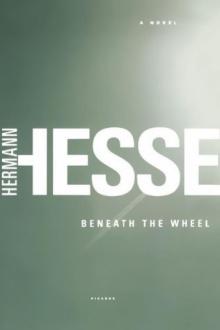 Beneath the Wheel
Beneath the Wheel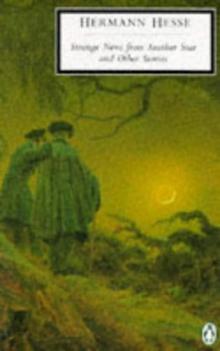 Strange News From Another Star
Strange News From Another Star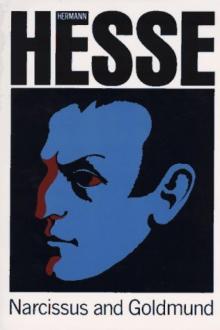 Narcissus and Goldmund
Narcissus and Goldmund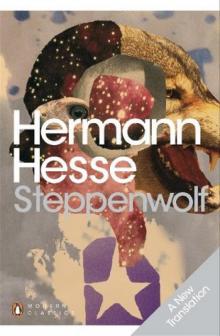 Steppenwolf
Steppenwolf Siddhartha
Siddhartha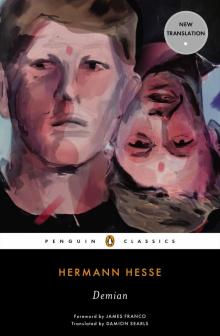 Demian
Demian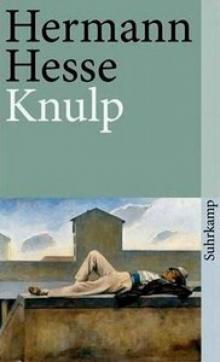 Knulp
Knulp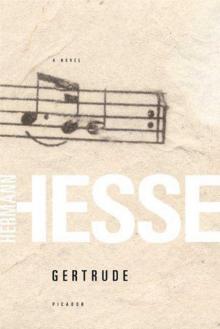 Gertrude
Gertrude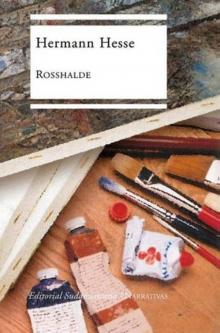 Rosshalde
Rosshalde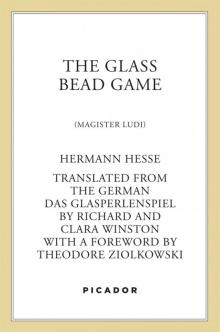 The Glass Bead Game
The Glass Bead Game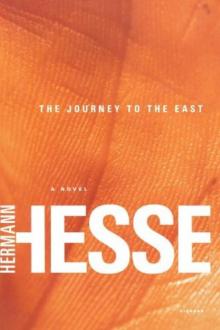 The Journey to the East
The Journey to the East Klingsor's Last Summer
Klingsor's Last Summer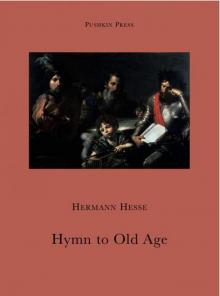 Hymn to Old Age
Hymn to Old Age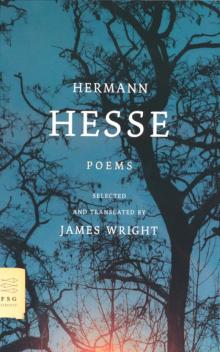 Poems
Poems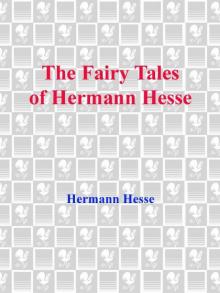 The Fairy Tales of Hermann Hesse
The Fairy Tales of Hermann Hesse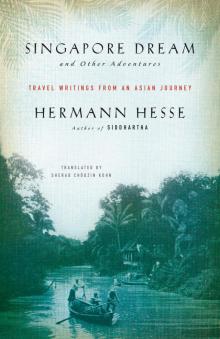 Singapore Dream and Other Adventures
Singapore Dream and Other Adventures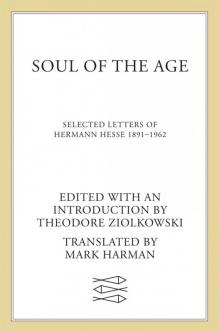 Soul of the Age
Soul of the Age